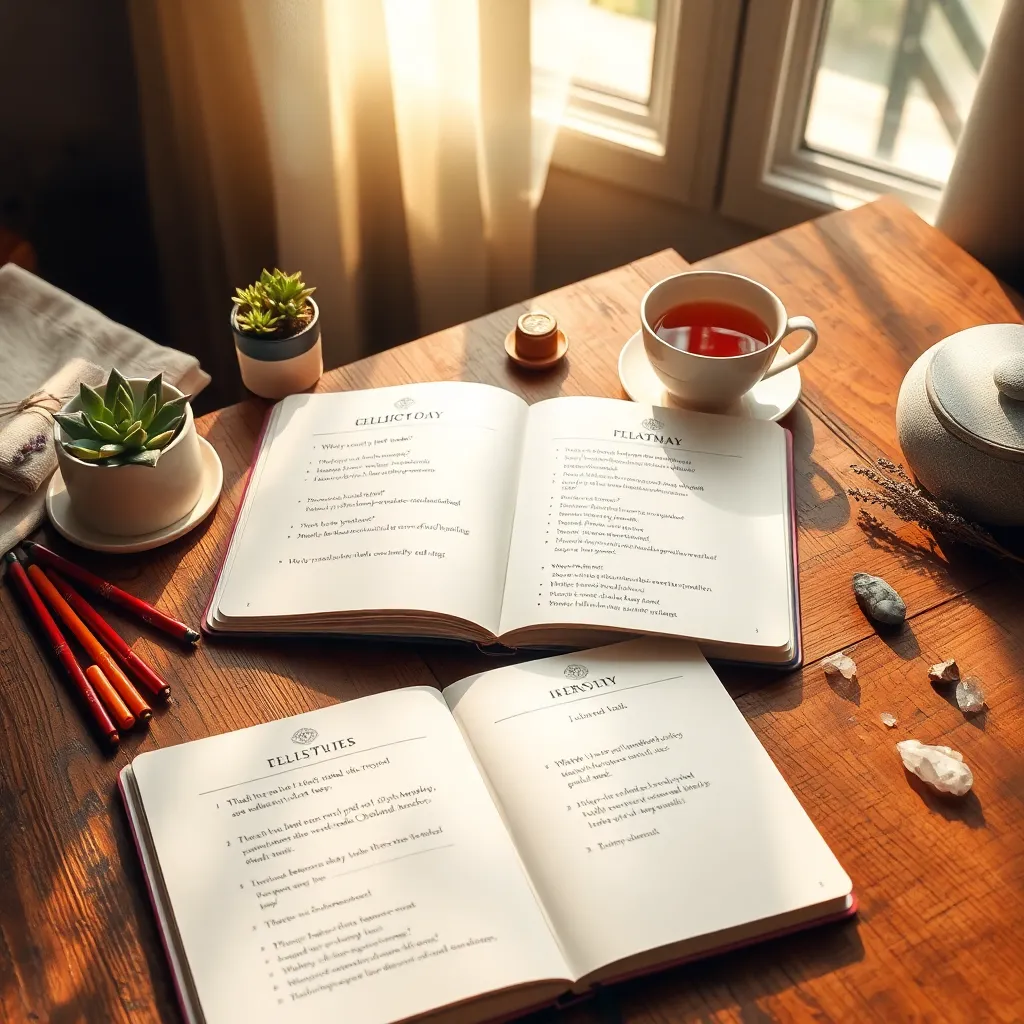Journaling is a powerful tool for nurturing mental clarity and emotional balance. Starting this simple practice can unlock deeper self-awareness and bring calm to your daily life.
Dive into easy journaling methods tailored for beginners and discover how to effortlessly capture your thoughts, boosting your well-being with each entry.
Set a Daily Writing Routine

Begin by choosing a consistent time each day to journal, transforming it into a cherished ritual. Start small with just five minutes; this helps build a sustainable habit.
Use simple prompts to spark reflection and growth. Consider these:
- “What am I grateful for today?”
- “What is one small joy I experienced?”
Let these guide your thoughts and nurture your well-being.
Choose a Simple Journal Format

Begin with a simple format like a gratitude journal. Each day, write down
- three things you’re grateful for
- one positive experience
to cultivate positivity.
Alternatively, try a one-sentence journal. Capture your day in a single sentence. This keeps journaling quick and encourages reflection without overwhelm.
Start with Guided Prompts

Start your journaling journey with guided prompts to ease into reflection. These prompts help focus thoughts and reduce overwhelm, making the process smoother.
Try prompts like:
- “What am I grateful for today?”
- “How did I overcome a recent challenge?”
Simple questions encourage deeper self-awareness and growth.
Reflect on Small Daily Wins

Recognize the power of small daily wins to boost your mood and motivation. Jot down one or two small victories each day, like completing a task or a moment of gratitude.
Use prompts to guide your reflection:
- What made you smile today?
- What challenge did you overcome?
These help you focus on growth and positivity.
Incorporate Sketches or Doodles

Adding sketches or doodles can make journaling more enjoyable and expressive. Even simple shapes or patterns can help you relax and unleash creativity. Embrace imperfections—the process, not the product, is what matters.
Try illustrating your mood or a favorite moment of the day. Use these prompts to guide your doodles:
- Draw your current emotion as a simple symbol.
- Sketch a highlight from your day, like a sun for warmth or a wave for calm.
Conclusion: Creating Beautiful Outdoor Spaces
In exploring simple journaling methods for beginners, we’ve uncovered five key concepts vital to nurturing your relationships: understanding emotional triggers, fostering gratitude, enhancing communication, cultivating empathy, and setting personal relationship goals. Each of these elements serves as a cornerstone for building deeper connections and fostering meaningful interactions with loved ones.
To begin your journaling journey, take a moment today to write a gratitude entry focused on a cherished relationship. This small step can illuminate the positive aspects of your interactions, reinforcing appreciation and affection.
Remember, the path to relationship success is a continuous journey of learning and growth. By saving or bookmarking this article, you ensure that these valuable insights are always within reach, ready to inspire and guide you whenever needed.
Embrace the transformative power of journaling as a tool for relationship success. The future of your relationships is bright, filled with opportunities for connection and understanding. Empower yourself to take control of your relational happiness by keeping this guide close. Start today, and watch your relationships flourish like never before.

